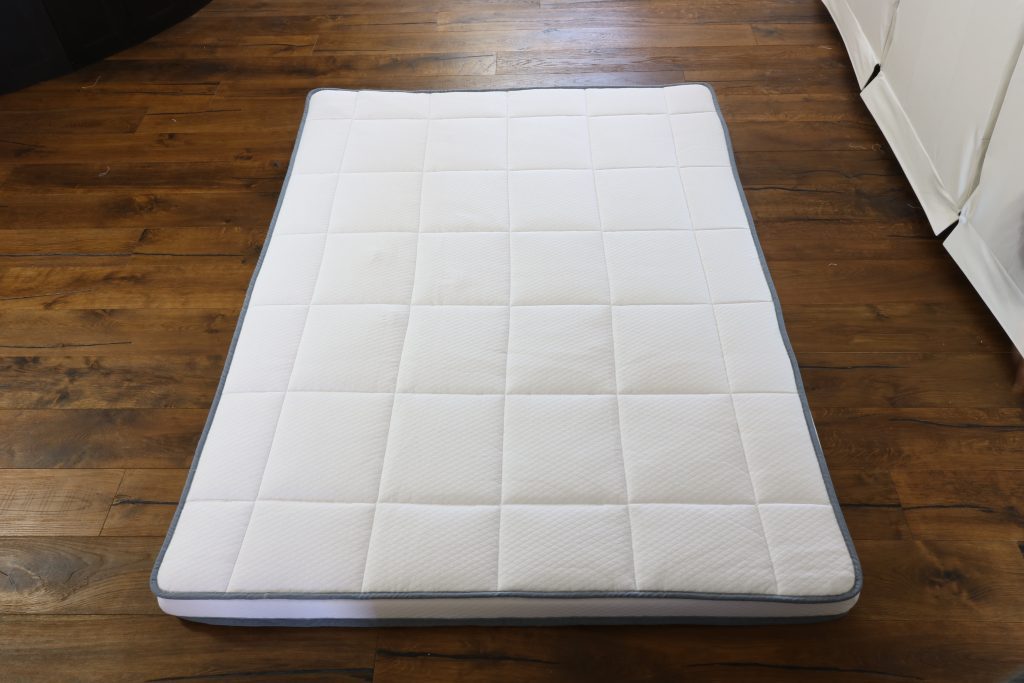
But while using a topper as a temporary fix can work, is it a good idea to use a topper to replace an everyday bed at home? As is often the case with bedding options, the decision relies upon several factors. These include personal preferences, budget, and physical needs. Learn more about how to decide whether sleeping on just a mattress topper is right for you.
The concept of What Makes a Bed Varies Across Cultures
The idea that a bed made up of a mattress, base, and sometimes a box spring mattress is a relatively newer cultural norm, particularly in the Western world. Many cultures around the world, particularly in some rural areas, still either sleep on the floor or use beds that are much thinner and firmer than you may be used to if you’re accustomed to sleeping on a bed with a mattress, box spring, and base.
Therefore, sleeping on just a topper may not be the most comfortable option if you’re from a part of the world that’s used to sleeping on a bed, but it can work in the short term. Physical needs and personal preferences are also factors to consider. One person’s ideal sleep situation can be another’s nightmare, as any couple shopping for a compromise between a firm-as-a-board and marshmallow-soft mattress can verify.
Common Reasons to Use a Mattress Topper as a Bed
Here are just a few reasons why people choose to sleep on just a mattress topper:
Travel or Temporary Living Situations
Let’s say you’re staying with a friend or relative after they’ve had surgery. They don’t have a guest bed or the budget to acquire one. Using a mattress topper for a short stay is one solution to this problem. If you’re starting out in a new place and still shopping for your perfect bed setup, sleeping on a topper is an option during that transitional period.
Budget Bedding
Some people might choose to sleep on a topper as a budget-minded move. The DIY mattress is another trend involving combining toppers to build a mattress either on a budget or as a creative endeavor.
Part of a Minimalist Lifestyle
Typically more about aesthetics and reducing consumption than budget (though there is often some overlap), a minimalist lifestyle aims to reduce the number of possessions a person owns. By either creating a DIY mattress or choosing to sleep on a topper, it’s possible to make do with less. An eco-friendly mindset is also commonly part of a minimalist lifestyle. Sustainable products like 100% natural and organic latex mattress toppers are often an attractive option among minimalists, regardless of whether they’re used solo or with a bed and base.
Physical and Health Needs to Consider When Using a Mattress Topper as a Bed
Here are some physical and health-related needs that can influence how you might feel sleeping close to the floor:
Allergies
If you’re allergic to dust mites or mold, then sleeping too close to the floor may not be a good option for you, according to The Sleep Foundation. The lack of air circulation can encourage mold or mildew growth, and common allergens such as dust mites tend to accumulate on the floor.
Chronic Pain and Mobility Issues
Everyone’s pain tolerance is different. Some people with low back pain swear by a firmer mattress, for example. For others, sleeping on the floor would prove painful and uncomfortable. If you have trouble getting up from the floor, then a traditional bed might be a better option. If you’re unsure whether sleeping on just a mattress topper is the right choice for your physical needs, check with your healthcare provider.
Temperature Control
If you’re a hot sleeper, sleeping on a topper directly on the floor will mean less airflow under it, which can make you feel too warm. The opposite can be true if the floor you’re sleeping on is very cold. According to The Sleep Foundation, some health conditions including anemia, hypothyroidism, and diabetes can make you more sensitive to cold temperatures. With no heat circulating under a bed, it could mean a too-hot or too-chilly night’s sleep.
Sleeping on just a topper for either a short or long period ultimately comes down to a combination of personal sleeping temperature preference and individual physical needs. If you’re unsure whether sleeping on just a mattress topper is the right choice for your physical wellbeing, check with your healthcare provider.
More things to Consider When Deciding Whether to Use a Mattress Topper as a Bed
These are a few additional factors to weigh when deciding whether to sleep on a mattress topper:
- Toppers are made to augment a mattress, not to serve as beds themselves. Therefore, they may not last as long when used as a bed.
- You’re not going to get the same levels of support and comfort that a bed alone or a bed with a topper can provide.
- If you’re planning on using a topper with a bedframe, a platform frame with a solid base will work better than a frame with slats.
- If you do decide to sleep on a mattress topper, be sure to check on whether sleeping on it full-time as a bed will void the warranty for it.
Whether in the short- or long-term, some trial and error may be required to find the right topper and test it out for a few nights to see how you feel. The bottom line is that sleeping on just a topper is doable for some people, depending on their health and personal preferences.

